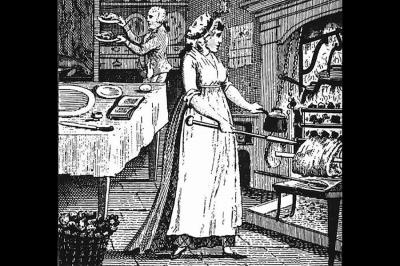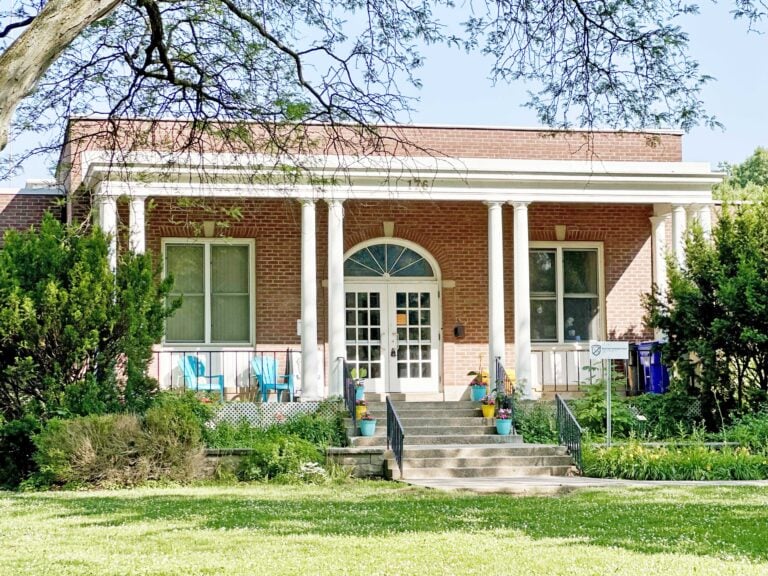So, if you were among the moneyed class living in the Town of Niagara (aka Niagara-on-the-Lake) during the first third of the 19th century, where was your kitchen?
The short answer is, not in the house.
Food preparation for the well-to-do was performed by indentured servants in an out-building that held the kitchen, which often doubled as servant sleeping quarters. It typically was joined to the house by a short covered walkway and food was placed on warmed, covered platters, carried to the dining room and there served to the family and guests.
Among the earliest of the NOTL high-brow houses to have an indoor kitchen was John Breakenridge’s 1823 Centre Street home.
Described in an 1828 edition of the town’s newspaper as one of the “most elegant and tasty houses in town,” the home was constructed on a raised foundation, allowing for a full-height kitchen and servants quarters in the basement.
Reinforcing social hierarchy, the dining room was directly above the kitchen so the servants would be, quite literally, underfoot.
Even in larger houses of lesser status, it was not uncommon to see the kitchen tucked away to the rear of the house in an attached addition or built as a connection between the main house and carriage house/shed.
In fact, it was typically only settlers’ homes and farmhouses where you would find the kitchen inside the house where the cooking was part of the owners’ chores. Servants, if there were any, were much more likely to be working outside on the farm.
While the rise of the Canadian urban middle class in the latter part of the 1800s allowed many more people to become homeowners, their pocketbooks couldn’t support domestic help. Hence, meal preparation fell to the “lady-of-the-house.” Despite this development, the hold-over tradition of kitchen segregation (an enclosed room in the rear of the house with doors that could be shut) was common well into the 20th century.
While some daring architects (e.g. Wright’s Usonian houses) attempted to toss this convention aside, it really wasn’t until the popularization of the ranch bungalow (with patio doors) in concert with the barbecue craze of the 1950s that the doors literally and finally began to come off suburban kitchens.










